Jadavpur University and University of Exeter build digital archive of famine tales


It’s a digital tale of two famines, told through art, connecting two continents with a shared history. Jadavpur University and University of Exeter, England, are collaborating on a project to document and also artistically depict the history of famines in India and Britain.
The project, Famine Tales: Famine and Dearth in India and Britain 1550-1800, is being funded by the Arts and Humanities Research Council (AHRC), UK.
The aim is to create a digital archive of the data in a format that is both informative and appealing. The other objective is to collaborate with the scroll painters of Bengal whose art form of pata painting has been languishing.
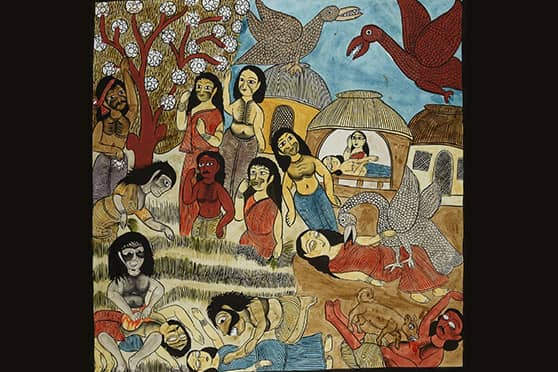
The primary investigators for Famine Tales are professors from various departments of University of Exeter and Jadavpur University. They are Ayesha Mukherjee, associate professor, Early Modern Literature and Culture, department of English and Film, University of Exeter; Sujit Kumar Mandal, associate professor of Comparative Literature, Jadavpur University; Abhijit Gupta, professor of English Literature, Jadavpur University; and Samantak Das, professor of Comparative Literature, Jadavpur University.
The team has compiled their research findings on famines that took place in India and Britain into a vast, searchable database.
“We chose India and Britain because famines were happening here at the same time, which many people are not aware of. So, it would be interesting to see whether Britain’s experience of the famine-affected their perception of the famines happening in India,” said Ayesha Mukherjee, the principal investigator of the project.
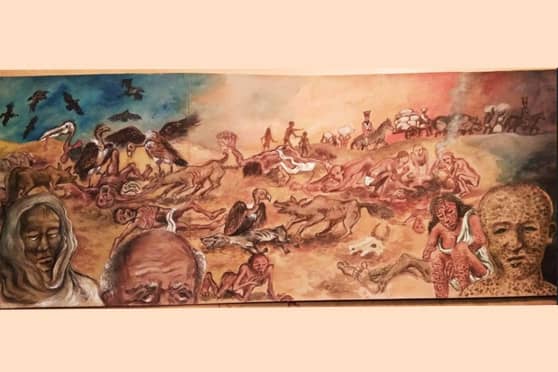
Into the world of pata painter
The two universities had put in place teams to work on the graphic interpretation of six tales from the initial database to form a digital archive in November 2019.
Some of the tales covered are Phullara-r Bhoj (Phullara’s Feast), Shekhoppir-deshe Durbhikkho (Famine in Shakespeare’s Land), Mundy Shaheb-er Golpo (The Tale of Mundy Sahib), Chhiattor-er Monnontor (The Bengal Famine of 1969-70), Kangal-er Gaan (penniless songs) and Bidrohi Captain Pouch (The Rebel Captain Pouch).
“The central point of the project is stories of early modern scarcity but there is a clear resonance with current concerns, especially in light of the pandemic which really demonstrates the fragility of the world’s resources,” said Sarah-Jane Ainsworth, the exhibition coordinator of Famine Tales.
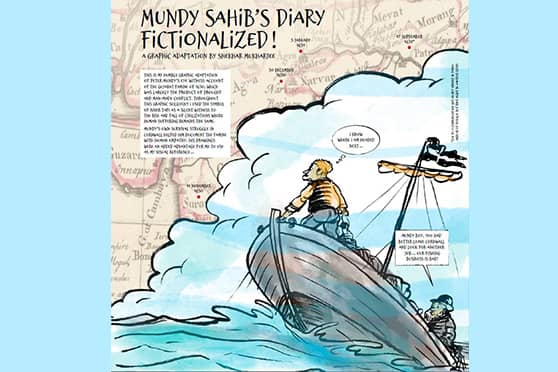
The rich history of scroll painting in Bengal came into the spotlight with writer Gurusaday Dutt’s research in the second decade of the 20th century, said Professor Sujit Kumar Mandal, who got in touch with Dukhushyam Chitrakar, the lead scroll painter for the project.
“Even though it got established as an art form, its patronage was reduced in the villages. Now there are only a few pockets of the Patua community in the Birbhum-Murshidabad region and Bankura-Midnapore region. Our artists are from Naya, West Midnapore, where 50 to 60 families reside, all belonging to the profession of scroll painting,” added Mandal. It is their interpretation of the various tales from the database that are now being exhibited online.
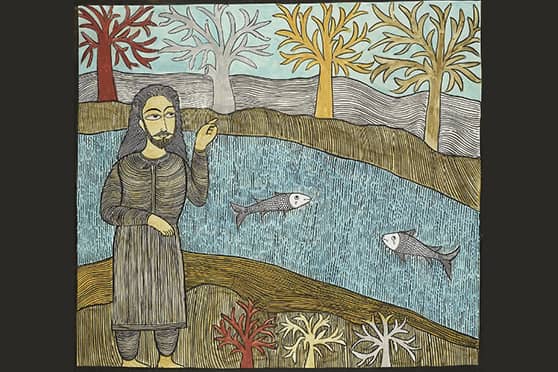
Fresh look at the past
Working on Famine Tales has opened up newer perspectives for the team comprising students of Exeter and Jadavpur universities.
“Being able to interpret the project’s expansive collections for digital exhibitions, particularly the astounding artwork from the Chitrakar community in Naya, West Midnapore, and our team of graphic artists in Kolkata, was a fantastic experience. I was able to truly engage with the content, even making a video recreating a recipe taken from Famine Tales from the 16th century to better understand the Shekkhopir-deshe Durbhikkho (Famine in Shakespeare-land) tale,” said Lily Long, a third-year undergraduate student of English at the University of Exeter who is working as a research intern along with Connor Spence, a fourth-year undergraduate student of English at the university.
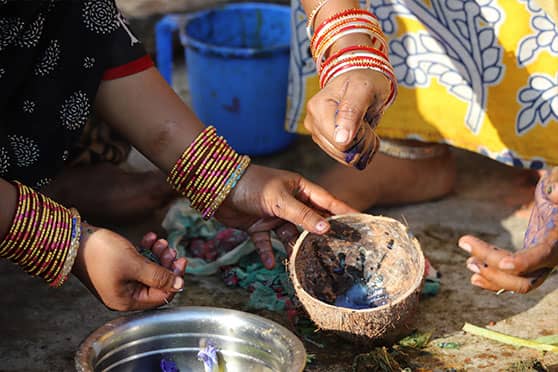
Mukherjee, too, feels the project has helped her learn a lot personally. “Our objective is to provide the artists with the facts and let them tell the story. I had to often translate Shakespearean concepts into Bengali, for the convenience of Dukhushyam Chitrakar. While making deliberate choices of concepts that would help the community relate more to the tales they were going to narrate, I learnt a lot about cross-cultural exchange and how to get through to a non-academic receptor of such vast research,” she said.
The research team also includes four interns from the Digital Humanities Lab of the University of Exeter --- Francis Elsender, a final-year Theology student; Sophie Hammond, a final-year History student; Eve Alderson, a fourth-year History and French student; and Tumisand Mbedzi, a third-year Archaeology, and Forensic Science student. Shrutakirti Dutta, a PhD student of Jadavpur University, works as a research fellow.
The plan is to wrap up the project by October and organise an exhibition on the University of Exeter campus from November 9 to 11. “We are now working on the book, which will be the outcome of this project,” said Avijit Gupta, who is the co-investigator of the project.
The graphic illustrations and written data of four of the tales have been published online till now. You can see them here https://faminetales.exeter.ac.uk/